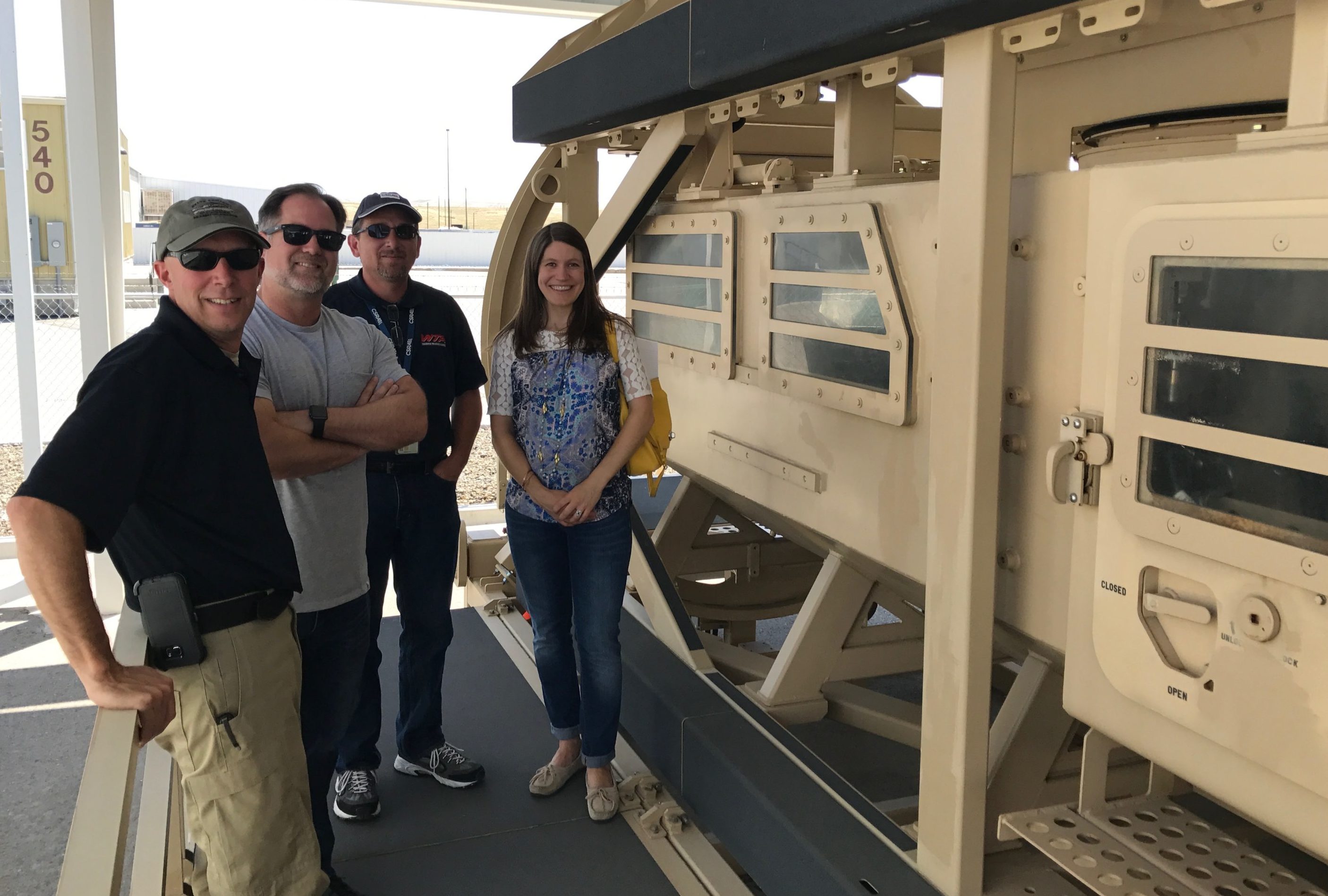
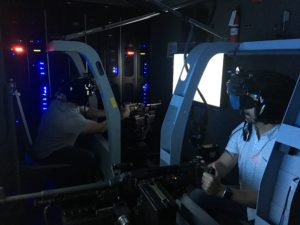
Chuck and Jim in the gunner simulation
Each trailer houses its own unique training simulator that allows Guardsmen and Women to learn about and operate land and air vehicles ranging from HMMWV (Humvee) and various helicopter models to tanks. When I first found out we were going to see the simulators, I was expecting to find several monitors linked together, a joystick or two, and a couple of banks of buttons and switches. To my surprise I was completely mistaken. Each trailer contained a briefing room, command center, and mostly accurate mockup of various portions of the vehicles mentioned above. One particular helicopter was split, with its cockpit in one trailer, and its fuselage with wench and guns in another. I was able to man one such gun while the pilot flew the helicopter around. I wore a standard issue aviation helmet outfitted with VR goggles. I was able to use the communications system to speak with the pilot and co-gunner. The gun had a number of features upping the realism factor. It simulated recoil, ammunition jams, and wind resistance. Accuracy and ammo usage were also calculated and could be pulled up on a display in the command center.
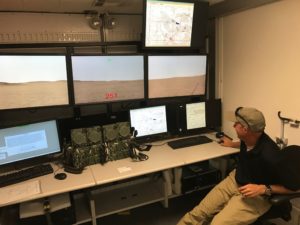
Dan Ishaug demonstrating recording features
The training value of these simulators cannot be understated. Approximately ten years ago when this type of technology was first being implemented, instructors noticed results almost immediately. Dan Ishaug, the Senior Technical Training Analyst on site said that he "noticed that new soldiers pick up the technology extremely fast and progressed quicker than they had before the arrival of the simulators." After speaking with all of the instructors and trying out several of the simulators its easy to see why these units are so effective. Multiple trailers can be linked via local area network. This allows instructors and platoon leaders to participate in joint training operations where helicopters, tanks, and other vehicles can be placed in accurately mapped locations like Kandahar in Afghanistan. All the participants in these joint training sessions are able to operate just as if they were carrying out real-life operations. In addition, all drills are recorded in 360 degrees. This is a useful tool because all training sessions can be dissected frame-by-frame from any angle. Participants and instructors can then discuss errors and areas that are in need of improvement.
In addition to a more streamlined training process, there are cost savings associated with these simulators. Although it is rumored that the price of some of these units can be as high as $4 million, they are well worth the investment. In the long-term they significantly reduce munitions expenditure and the potential damage to equipment that can come from training on real vehicles too soon. For example, each practice round fired from a tank costs around a a thousand bucks and ammunition used in actual combat is even more pricey. With the help of the tank simulators, each group of trainees can fire the full 42 virtual rounds that each tank holds with little to no cost. This helps each crew to improve accuracy, and teaches proper firing techniques and tactics so ammunition isn't wasted. All of this carries over to live-fire operations and to the actual battlefield.
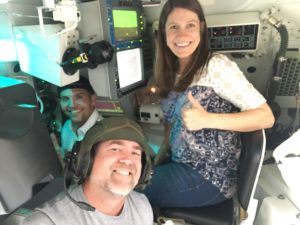
The official tank crew of the IVRC
At the end of the day there were a few units we were unable to try like the MRAP (mine resistant, ambush protected vehicle) that simulated HMMWV rollovers (for obvious safety concerns) and a couple of the more finicky helicopters, but we were able to get a pretty good understanding of how the entire process works. The experience was another great example of how virtual reality in its various forms can be utilized as training tools that in many ways are more efficient and powerful than traditional methods. And even though the the costs of the units are high what matters most is the increased effectiveness and safety of our servicemen and women.

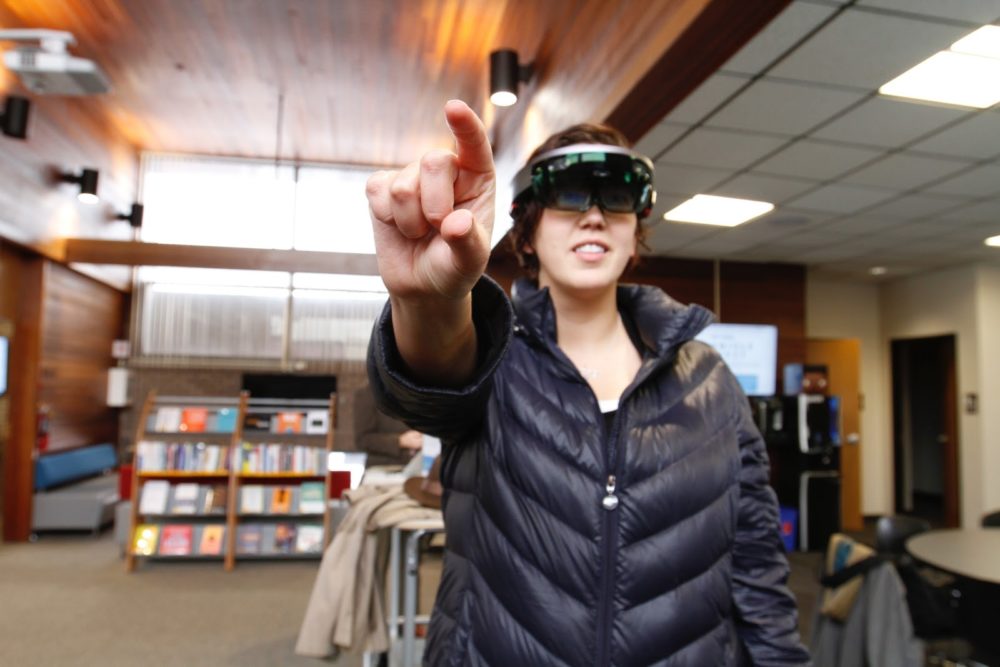

Recent Comments